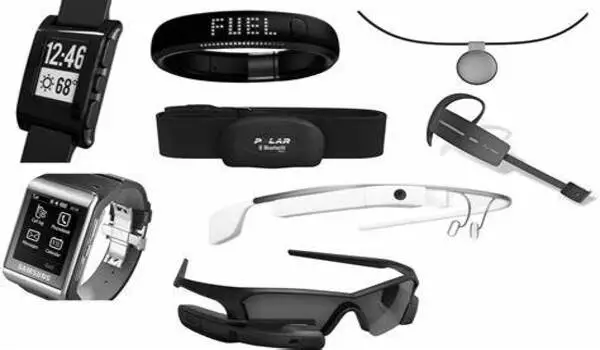Gold is well-known for its high conductivity, resistance to corrosion, and biocompatibility. These properties make it an appealing material for certain components in wearable devices, particularly those that come into direct contact with the skin or require consistent conductivity. Using various gold nanowires, scientists have pioneered a novel approach to developing intelligent healthcare sensors.
Top Olympic performers receive the gold medal, a symbol of wealth and honor in both the East and the West. Because of its air stability, exceptional electrical conductivity, and biocompatibility, this metal is also used in a variety of fields. It is widely used as the ‘preferred catalyst’ in the medical and energy sectors, and it is increasingly being used in cutting-edge wearable technologies.
A research team led by Professor Sei Kwang Hahn and Dr. Tae Yeon Kim from the Department of Materials Science and Engineering at Pohang University of Science and Technology (POSTECH) developed an integrated wearable sensor device that effectively measures and processes two bio-signals simultaneously. Their research findings were featured in Advanced Materials, an international top journal in the materials field.
This research underscores the potential for the development of a futuristic bioelectronics platform capable of analyzing a diverse range of bio-signals. We envision new prospects across various industries including healthcare and integrated electronic systems.
Professor Sei Kwang Hahn
Wearable devices, such as attachments and patches, are crucial in detecting physical, chemical, and electrophysiological signals for disease diagnosis and management. Recent advances in research have focused on developing wearables that can measure multiple bio-signals at the same time. The disparate materials required for each signal measurement, however, have been a major challenge, resulting in interface damage, complex fabrication, and reduced device stability. Furthermore, the analysis of these various signals necessitates the use of additional signal processing systems and algorithms.
The team approached this problem by utilizing various shapes of gold (Au) nanowires. While silver (Ag) nanowires are commonly used in wearable devices due to their extreme thinness, lightness, and conductivity, the team fused them with gold. Initially, they created bulk gold nanowires by coating the outside of silver nanowires, which prevented the galvanic phenomenon. They then hollowed out gold nanowires by selectively etching the silver from the gold-coated nanowires. The bulk gold nanowires were sensitive to temperature changes, whereas the hollow gold nanowires were extremely sensitive to minute changes in strain.

These nanowires were then seamlessly integrated without separations onto a substrate made of styrene-ethylene-butylene-styrene (SEBS) polymer. They created an integrated sensor capable of measuring both temperature and strain by combining two types of gold nanowires, each with unique properties. They also created a logic circuit for signal analysis by utilizing the negative gauge factor created by introducing micrometer-scale corrugations into the pattern. This approach resulted in the successful development of an intelligent wearable device system that not only captures but also analyzes signals at the same time, all while using a single Au material.
The team’s sensors exhibited remarkable performance in detecting subtle muscle tremors, identifying heartbeat patterns, recognizing speech through vocal cord tremors, and monitoring changes in body temperature. Notably, these sensors maintained high stability without causing damage to the material interfaces. Their flexibility and excellent stretchability enabled them to conform to curved skin seamlessly.
Professor Sei Kwang Hahn stated, “This research underscores the potential for the development of a futuristic bioelectronics platform capable of analyzing a diverse range of bio-signals.” He added, “We envision new prospects across various industries including healthcare and integrated electronic systems.”
The research was sponsored by the Basic Research Program and the Biomedical Technology Development Program of the National Research Foundation of Korea, and POSCO Holdings.
Top Olympic achievers are awarded the gold medal, a symbol revered for wealth and honor both in the East and the West. This metal also serves as a key element in diverse fields due to its stability in air, exceptional electrical conductivity, and biocompatibility. It’s highly favored in medical and energy sectors as the ‘preferred catalyst’ and is increasingly finding application in cutting-edge wearable technologies.
A research team led by Professor Sei Kwang Hahn and Dr. Tae Yeon Kim from the Department of Materials Science and Engineering at Pohang University of Science and Technology (POSTECH) developed an integrated wearable sensor device that effectively measures and processes two bio-signals simultaneously. Their research findings were featured in Advanced Materials, an international top journal in the materials field.
Wearable devices, such as attachments and patches, are crucial in detecting physical, chemical, and electrophysiological signals for disease diagnosis and management. Recent advances in research have focused on developing wearables that can measure multiple bio-signals at the same time. The disparate materials required for each signal measurement, however, have been a major challenge, resulting in interface damage, complex fabrication, and reduced device stability. Furthermore, the analysis of these various signals necessitates the use of additional signal processing systems and algorithms.
The team approached this problem by utilizing various shapes of gold (Au) nanowires. While silver (Ag) nanowires are commonly used in wearable devices due to their extreme thinness, lightness, and conductivity, the team fused them with gold. Initially, they created bulk gold nanowires by coating the outside of silver nanowires, which prevented the galvanic phenomenon. They then hollowed out gold nanowires by selectively etching the silver from the gold-coated nanowires. The bulk gold nanowires were sensitive to temperature changes, whereas the hollow gold nanowires were extremely sensitive to minute changes in strain.
These nanowires were then seamlessly integrated without separations onto a substrate made of styrene-ethylene-butylene-styrene (SEBS) polymer. They created an integrated sensor capable of measuring both temperature and strain by combining two types of gold nanowires, each with unique properties. They also created a logic circuit for signal analysis by utilizing the negative gauge factor created by introducing micrometer-scale corrugations into the pattern. This approach resulted in the successful development of an intelligent wearable device system that not only captures but also analyzes signals at the same time, all while using a single Au material.
The sensors developed by the team performed admirably in detecting subtle muscle tremors, identifying heartbeat patterns, recognizing speech via vocal cord tremors, and monitoring changes in body temperature. Notably, these sensors maintained high stability without causing material interface damage. Their flexibility and excellent stretchability allowed them to seamlessly conform to curved skin.
















